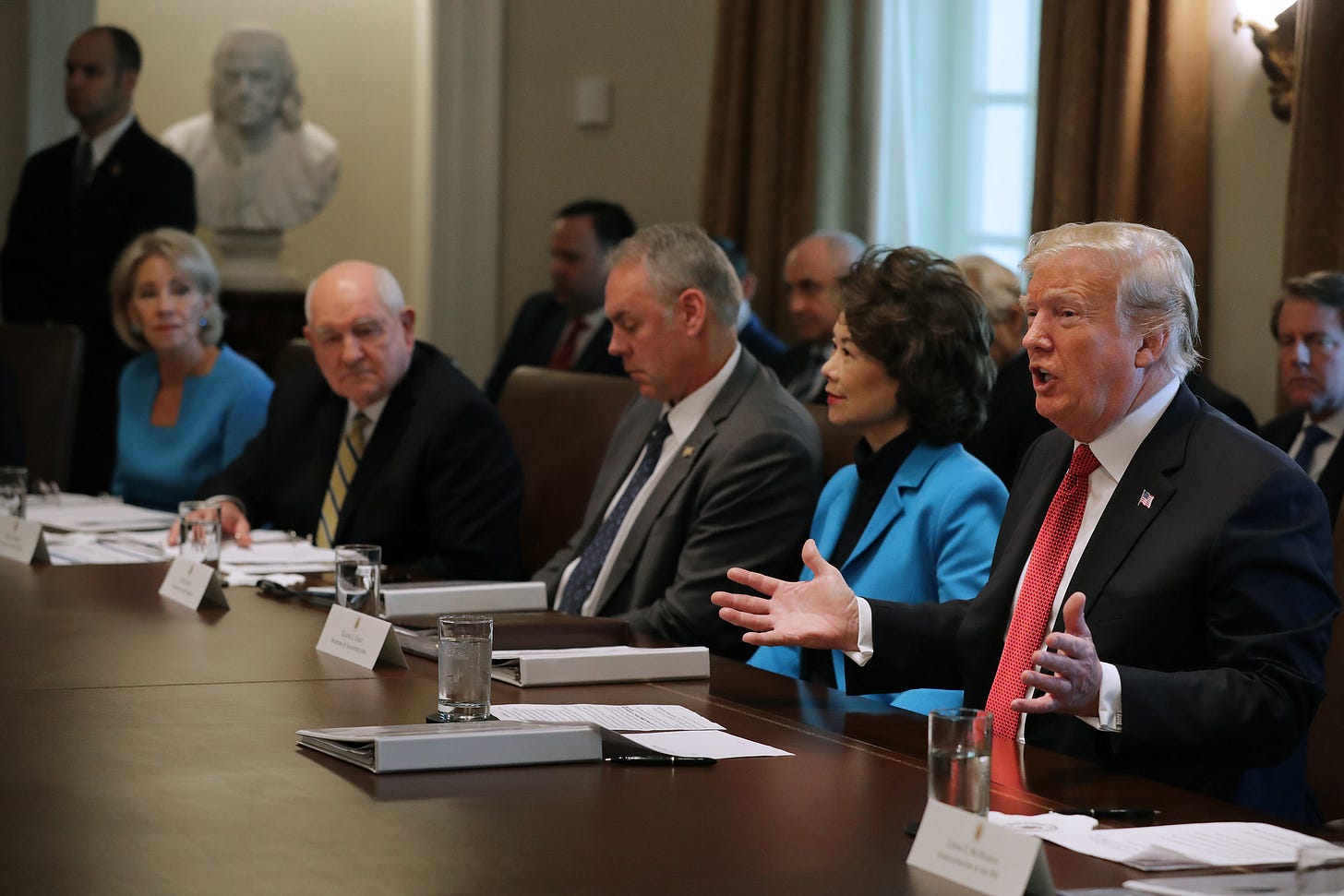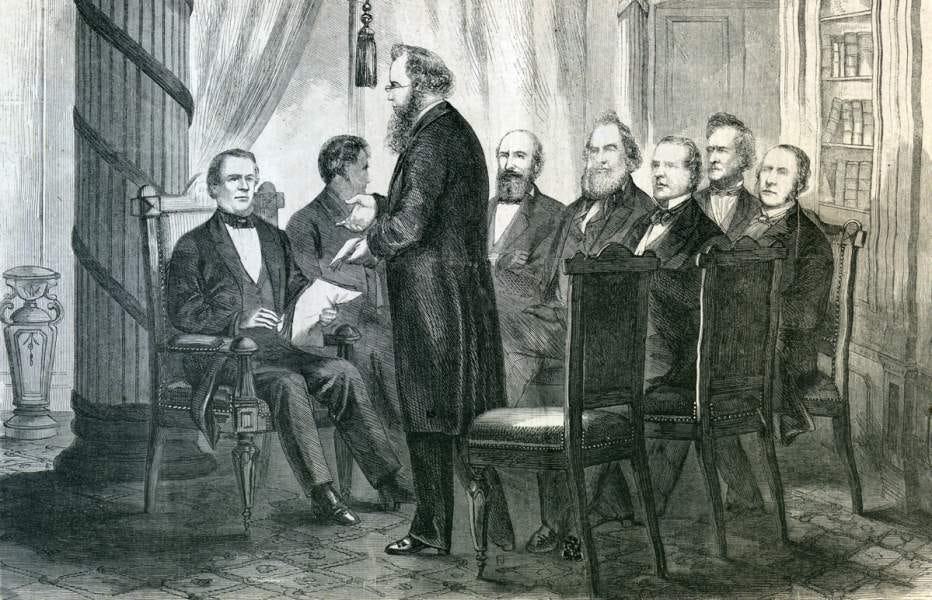Precedents for This Week’s Cabinet Exodus
It’s rare—and historically an indicator of instability in an administration.

Since the attacks on the Capitol on Wednesday, several senior Trump administration officials and cabinet secretaries have resigned in protest over the president’s rhetoric and the riot resulting from it. While a mass cabinet exodus is unusual and hasn’t occurred in many decades, it is not unprecedented and symbolizes the collapse of an administration.
All presidents have cabinet turnover, but there have been two historic conditions under which the cabinet experiences significant personnel change. First, whenever there is a new administration—whether that be a new president or a new term—secretaries submit pro forma resignations. New presidents usually create their cabinets from scratch and incumbent presidents often elect to replace a few secretaries at the start of their second term. This process also applies when a president dies in office and the vice president takes over. For example, when Theodore Roosevelt and Harry Truman took office after the deaths of William McKinley and Franklin D. Roosevelt, the existing secretaries offered to resign. Both TR and Truman initially asked the secretaries to stay on while they got their sea legs under them, but then moved to make personnel changes and install their own secretaries in office relatively quickly.
Significant cabinet turnover has also been triggered by scandal and the breakdown of effective working relationships. The first mass resignation occurred during Andrew Jackson’s presidency. Just a few months into Jackson’s tenure, his cabinet was fractured over a social scandal: Many of the cabinet secretaries’ wives refused to socialize and recognize Margaret Eaton, the wife of Secretary of War John Eaton, as their equal. They suggested that the Eatons had engaged in sexual relations before their marriage, while Margaret was still married to her first husband. Jackson was outraged. He adored the Eatons, but was also convinced that the rumors were an orchestrated smear campaign to undermine his political allies. Furthermore, Jackson took the accusations personally. His wife, Rachel, had suffered from similar accusations during his presidential campaign and he was convinced the drama had hastened her early death.
On September 10, 1829, Jackson convened a cabinet meeting and demanded that the secretaries and their wives socialize with Margaret. They declined and the cabinet was effectively broken. Jackson refused to meet with the secretaries for the next year and a half, until Secretary of State Martin Van Buren engineered a solution. He and Eaton would resign, giving Jackson the opportunity to demand the resignations of the other recalcitrant secretaries. Van Buren and Eaton would then be rewarded with other plumb positions. Accordingly, on April 19, Van Buren and Eaton delivered their official letters and the next day Jackson forced Secretary of the Treasury Samuel Ingram, Attorney General John Berrien, and Secretary of the Navy John Branch to resign. New cabinet officials replaced the set that departed, but Jackson also relied on an informal group—dubbed the “kitchen cabinet,” a sort of precursor to the modern White House staff—for advice.
The next significant departure of department secretaries transpired in 1866 when President Andrew Johnson broke with congressional Republicans. After Abraham Lincoln’s assassination, Johnson promised to continue his predecessor’s policies and retain his cabinet secretaries. Yet, just a few months after taking office, Johnson began to undermine Reconstruction policies. He removed officials who were hostile to former Confederates, overturned Freedmen’s Bureau orders and purged their ranks, and sought to restore the civil and property rights of white Southerners.

Artist’s depiction of President Andrew Johnson’s first cabinet meeting on April 16, 1865. Johnson is seated at left. Secretary of War Edwin Stanton is shown standing; when Johnson later tried to fire him, it triggered impeachment proceedings. (Via Getty. Originally published in Frank Leslie’s Illustrated Newspaper, January 6, 1866.)
Initially, members of Johnson’s cabinet and Republicans in Congress tried to avoid a clash with the president. Any remaining good will was destroyed on February 18, 1866, when Johnson vetoed the Freedmen’s Bureau Bill, which renewed the charter for the organization that provided food, housing, education, and vocational training for recently emancipated African Americans. A few months after Johnson’s veto, Postmaster General William Dennison Jr., Attorney General James Speed, and Secretary of the Interior James Harlan resigned in protest when it became clear that Johnson had fully broken with the Radical Republicans in Congress. Johnson continued to experience significant cabinet turmoil for the remainder of his presidency—with his removal of Secretary of War Edwin Stanton triggering his impeachment.
No presidency is immune from tensions and scandals between the president and the secretaries. But when relations have deteriorated to such an extent that secretaries resign en masse, historical precedent suggests that the administration is broken. Indeed, few presidents would choose to have their cabinets listed next to those of Andrew Jackson and Andrew Johnson.

